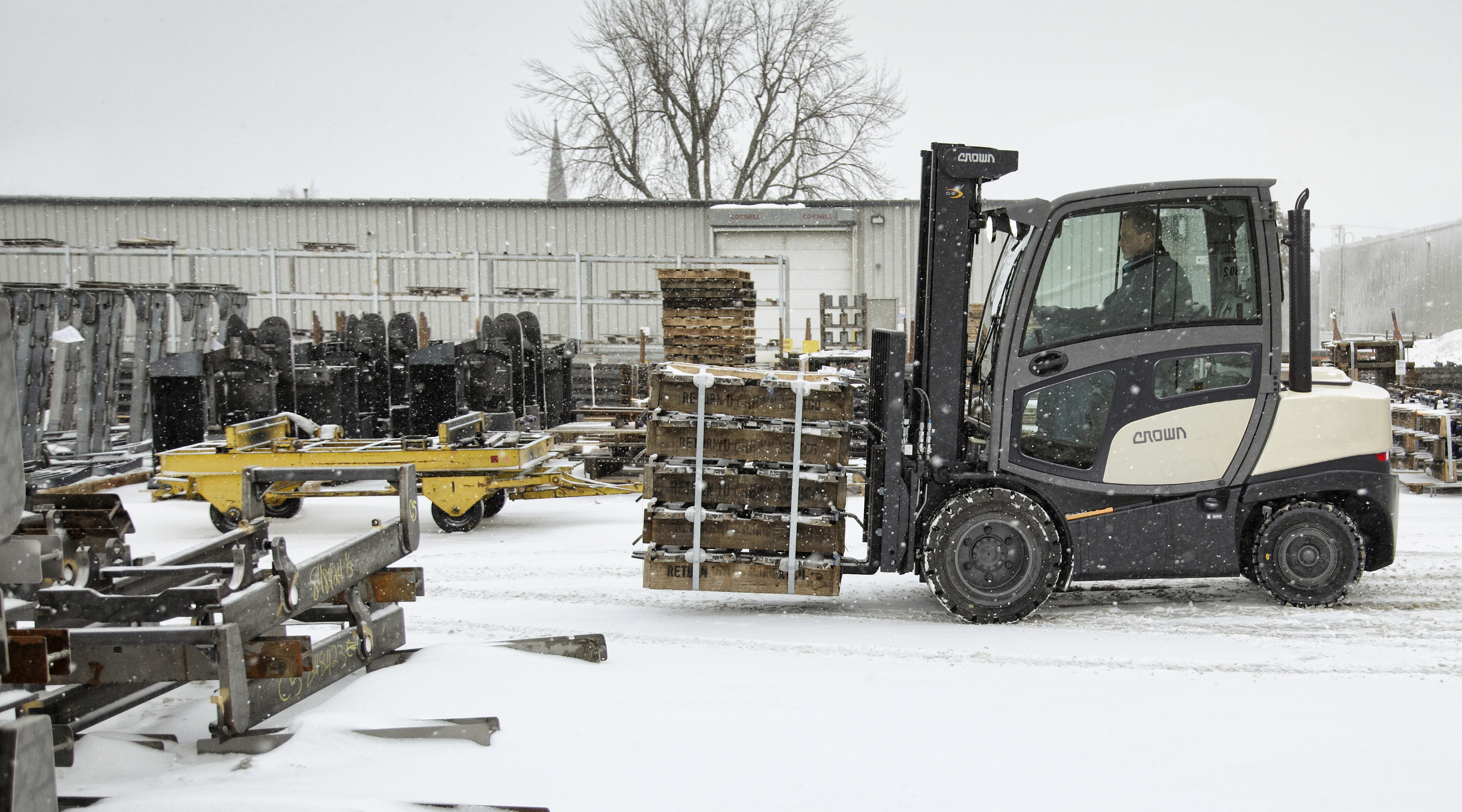Considerations for Outdoor Internal Combustion Forklifts

When it comes to selecting internal combustion forklifts for outdoor use, the process can become complicated, even with convenient tools designed to help compare and select the right equipment.
There are some obvious considerations, like lift capacity, but outdoor applications don’t have the luxury of being in consistent, climate-controlled environments like their indoor counterparts. Outdoor applications may have to deal with a wide variety of environmental conditions, and there are a number of considerations related to those changing environments that we’ll consider in this blog.
Tires: Cushion vs. Pneumatic?
Pneumatic tires are tough, often intended for outdoor applications. They provide operators better traction on loose gravel and can handle more difficult terrain than their cushion counterpart. Where cushion tires are smooth, ideal for concrete surfaces and blacktop, pneumatic tires are rugged and ideal for lumberyards, gravel or environments that might involve traveling over rough terrain.
Pneumatic tires also come in two varieties, air-filled and solid pneumatic (super-elastic). If you are concerned about the potential of tire puncture in your outdoor environment, then solid pneumatic tires might be best suited for your application.
Fuel Source: Diesel or LPG?
If you are investigating forklift options for a new outdoor application, there could be a number of variables that influence the decision between diesel fuel and LPG. There are infrastructure requirements, emissions considerations, and potentially, differences in performance and operating cost that should be investigated.
If you already have some outdoor forklifts in operation, your existing infrastructure may be a determining factor. You may already have diesel or LPG holding tanks and refueling stations in place along with recurring fuel deliveries from a local supplier. In this case, it is unlikely that you’ll choose a different fuel option unless there are other factors, such as emissions restrictions, that override the decision.
If you’re just beginning to introduce outdoor applications to your operation, it is best to ask your forklift supplier to conduct an on-site application survey. This can help you navigate all of the variables affecting fuel choice and guide the decision-making process.
Whether you choose diesel or LPG forklifts, one forklift feature that can be very helpful for operators is an on-board fuel gauge. For instance, Crown’s C-5 Series includes a low fuel indicator that counts down in four minute intervals when there is sixteen minutes of runtime left, which allows the operator to determine when they need to travel to the refueling station.
Lift Capacity: How Heavy are Your Loads?
Internal combustion counterbalance forklifts are available to handle very heavy loads ranging up to 20,000 pounds and more. While most people have an idea of what lift capacity they need for their application, both load weight and size should be considered.
It is also important that you identify the maximum load weight and size you’ll encounter in your operation, rather than focusing on the weight and size that you move most often. Here again, an on-site application survey can help you determine the lift capacity and load center required for your operation.
Visibility
Outdoor applications can often involve moving larger loads, where operator visibility can be challenging. There are options for enhancing your operators’ field of view, which include additional lighting or even cameras that provide better rearview visibility. If your outdoor forklifts are equipped with a cabin of some sort, windshield wipers may also help with visibility in inclement weather.
Cabin: Hard or Soft?
Speaking of cabins, there’s really no better way to improve operator comfort in outdoor applications. Whether there’s inclement weather, frigid temperatures or extreme heat, the cabin and its features can play a huge role in how productive your operators can be on a given day. Crown offers a variety of cabin configuration options, with hard or soft construction, and choosing the right approach depends on your application.
A hard cabin affords you the options of having air conditioning and heat. Its large windows can provide visibility in nearly all directions, and they are available in a variety of glass options to best suit your application. For instance, very cold applications may need to avoid certain types of glass while others may actually require the use of polycarbonate windows.
Soft cabins provide protection and comfort for operators in both indoor and outdoor applications, and they can offer more customization based on your needs, environment and operators. Because soft cabins are more modular, panels can be installed in a variety of configurations and can be easily reconfigured to fit multiple applications.
The numerous options and customizations available for internal combustion forklifts in outdoor applications can make it challenging to determine the right combination to support your operation’s productivity. While no one knows your operation better than you, discussing the options with your forklift provider can be a great first step in helping you tackle The Great Outdoors.
Be sure to subscribe and keep up with all of the latest news, tips and insight for your material handling info.